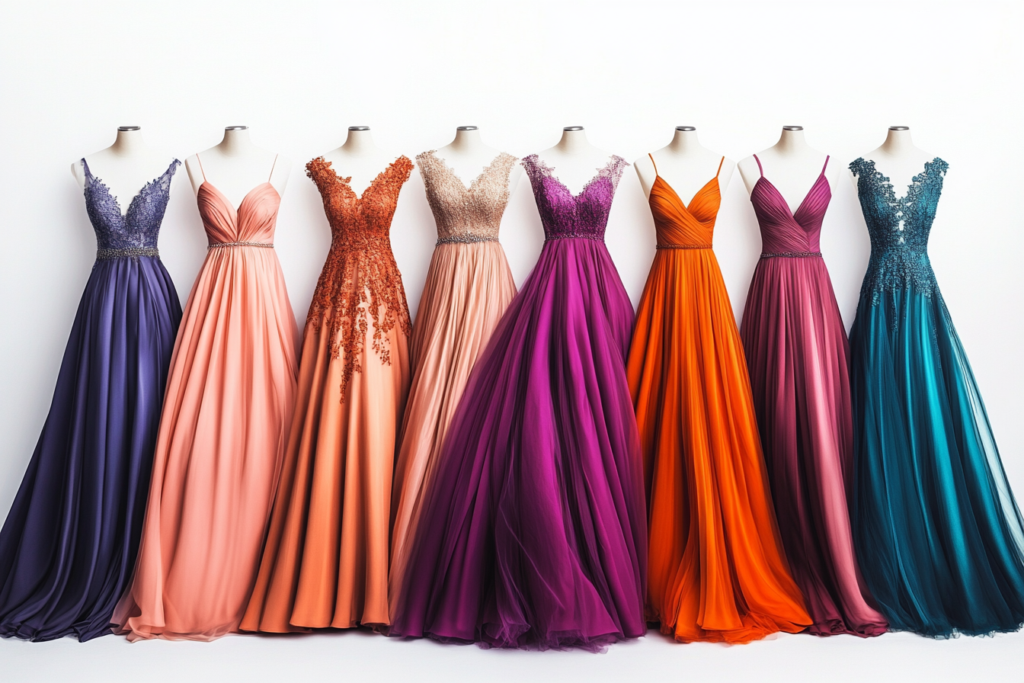Exploring our Dresses: A Comprehensive Guide
Dresses are a fundamental and versatile piece in women’s fashion, serving as a staple in every woman’s wardrobe. Whether for casual days, formal events, or evening affairs, the dress is a timeless garment that comes in many different shapes, cuts, styles, and fabrics. As one of the most popular items in women’s clothing, the dress has evolved to suit various body types, trends, and occasions. In this expanded guide, we’ll explore the types of dresses, their silhouettes, common dress names across different countries, the best occasions to wear them, and how the world of sizes, colors, and styles shapes modern women’s wardrobes.
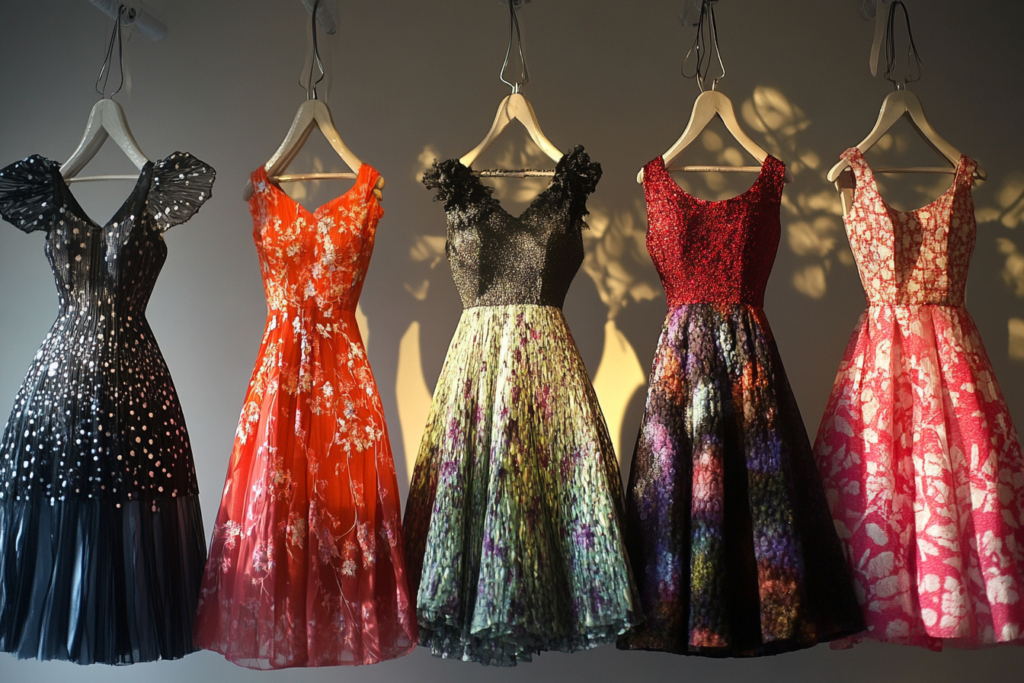


Types of Dresses
Dresses come in various designs, each tailored for different purposes. From casual wear to evening gowns, each dress offers a unique style. Here are the types of dresses most commonly found in women’s fashion:
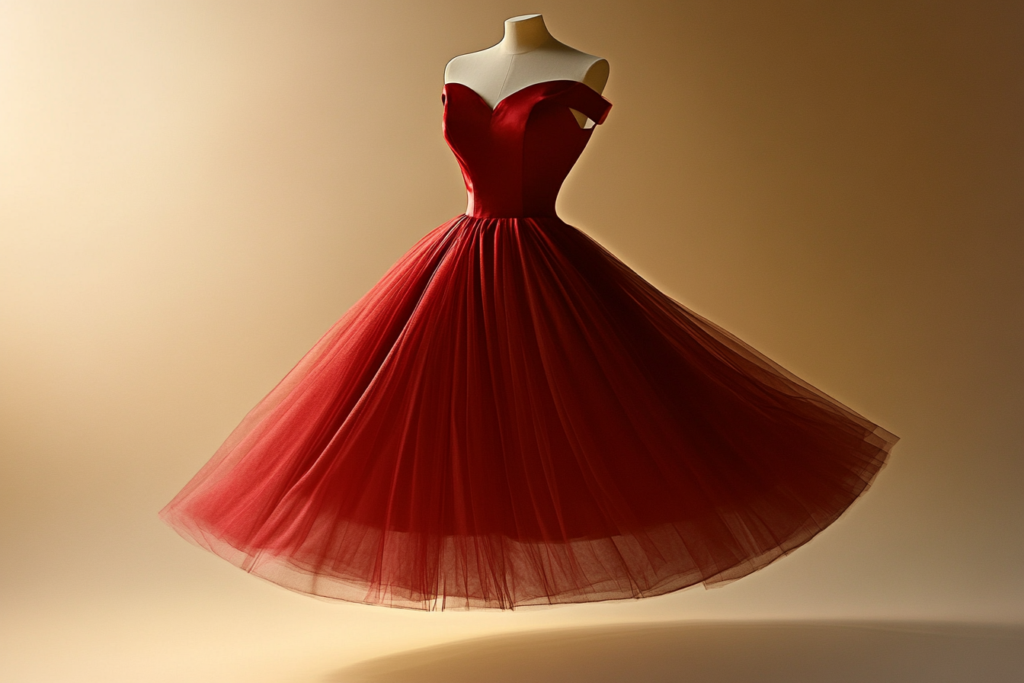
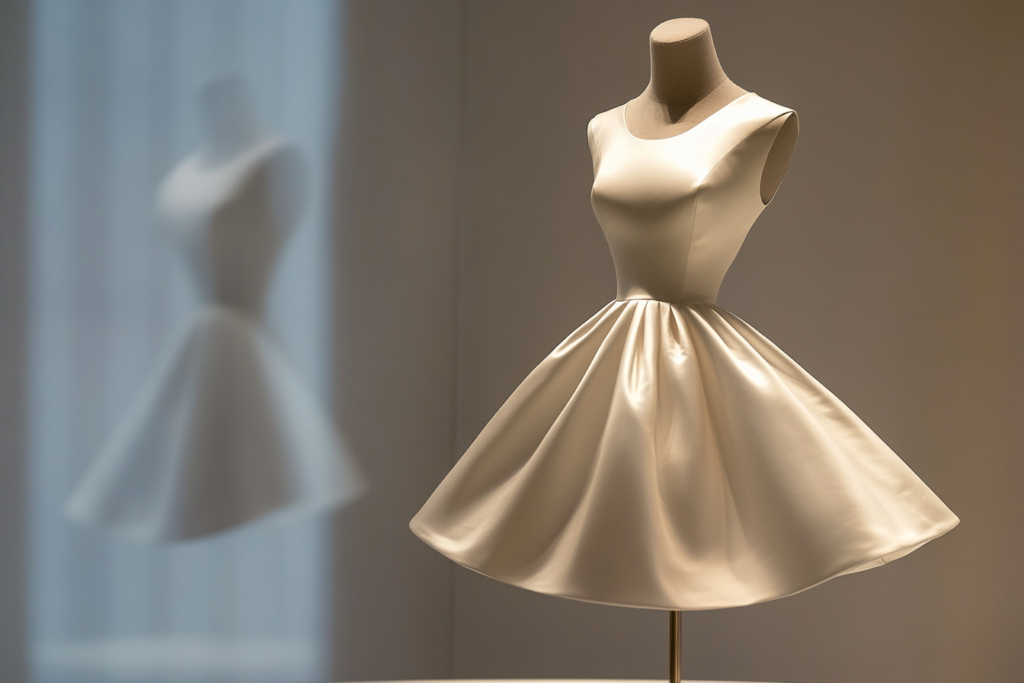
| Dress Type | Description | Occasions | Ideal For |
|---|---|---|---|
| A-Line Dress | A classic dress that is fitted at the top and gradually flares out toward the hem, creating an “A” shape. | Casual outings, office wear, evening wear | Retailers, Store brands, Fashion designers |


| Dress Type | Description | Occasions | Ideal For |
|---|---|---|---|
| Sheath Dress | A fitted dress that hugs the body and falls straight down from the shoulders to the hem. | Business events, cocktail parties, professional settings | Retailers, Designers |


| Dress Type | Description | Occasions | Ideal For |
|---|---|---|---|
| Shift Dress | A loose, straight-cut dress that doesn’t emphasize the waist or hips. | Casual events, informal gatherings | Retailers, Store brands |

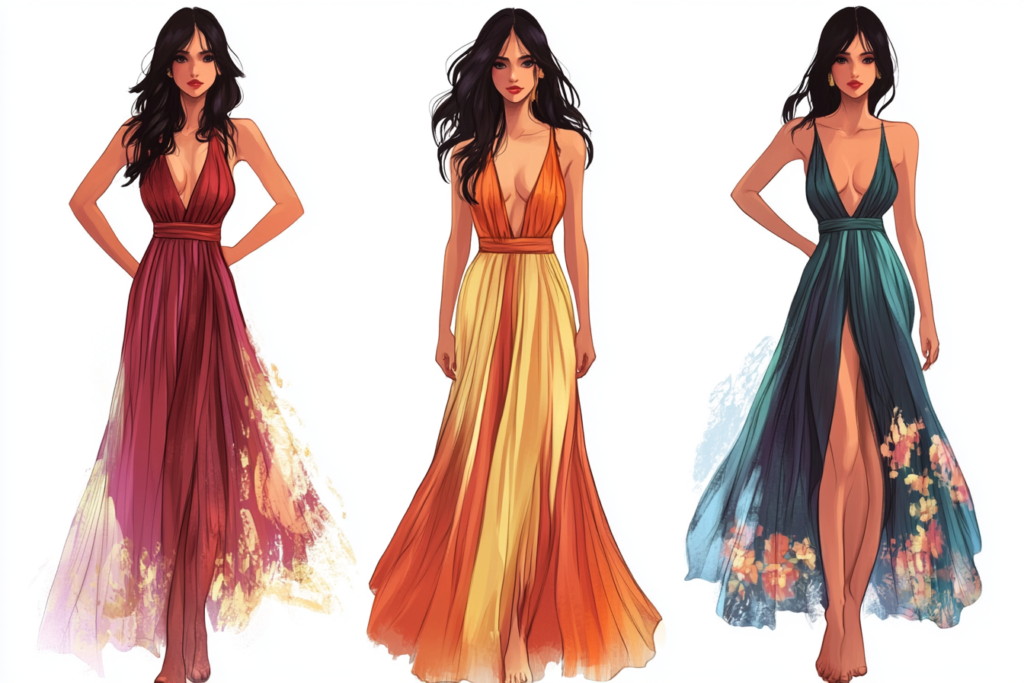
| Dress Type | Description | Occasions | Ideal For |
|---|---|---|---|
| Maxi Dress | A long dress that typically reaches the ankles or floor. Can be either form-fitting or loose. | Summer events, weddings, beach outings | Retailers, Designers, Store brands |
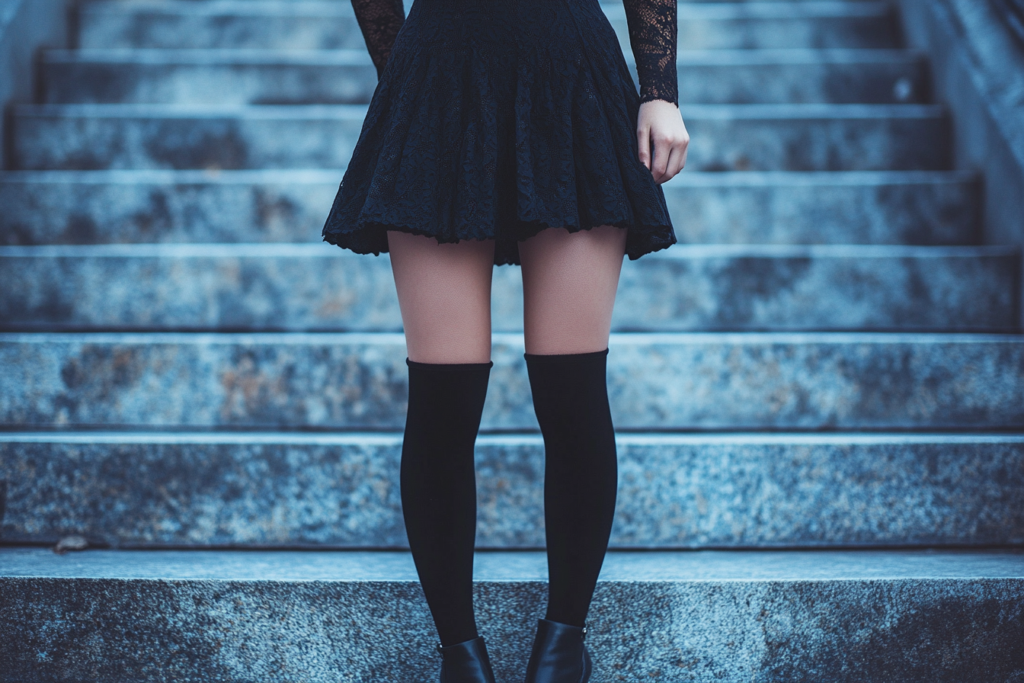
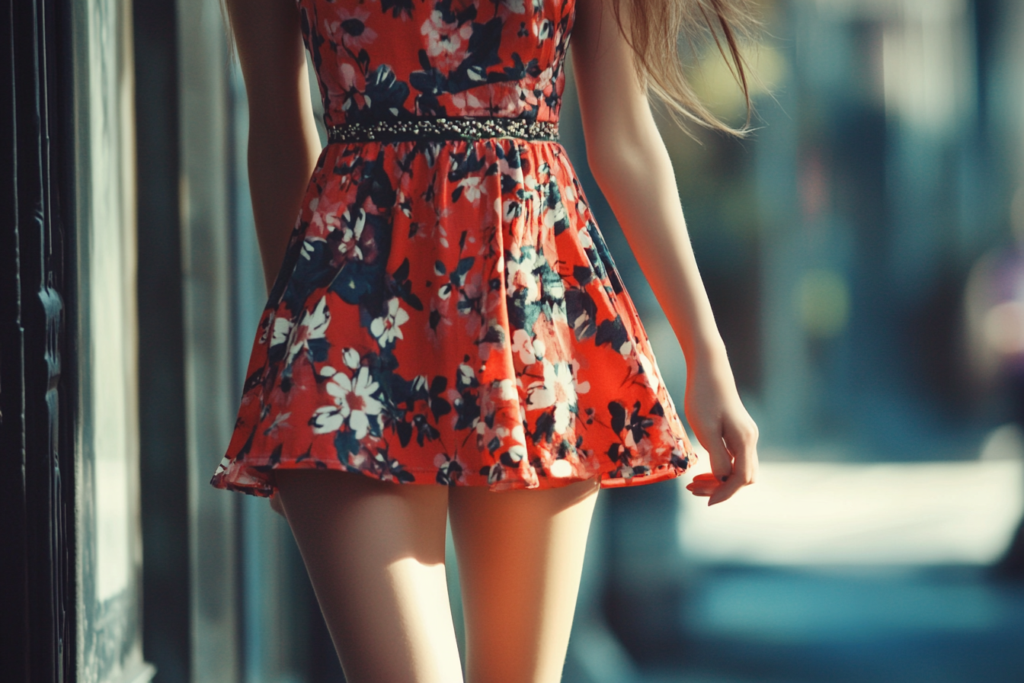
| Dress Type | Description | Occasions | Ideal For |
|---|---|---|---|
| Mini Dress | A dress with a hemline that typically falls above the knee, often worn as a fashionable and playful option. | Night outs, parties, casual outings | Retailers, Fashion designers |
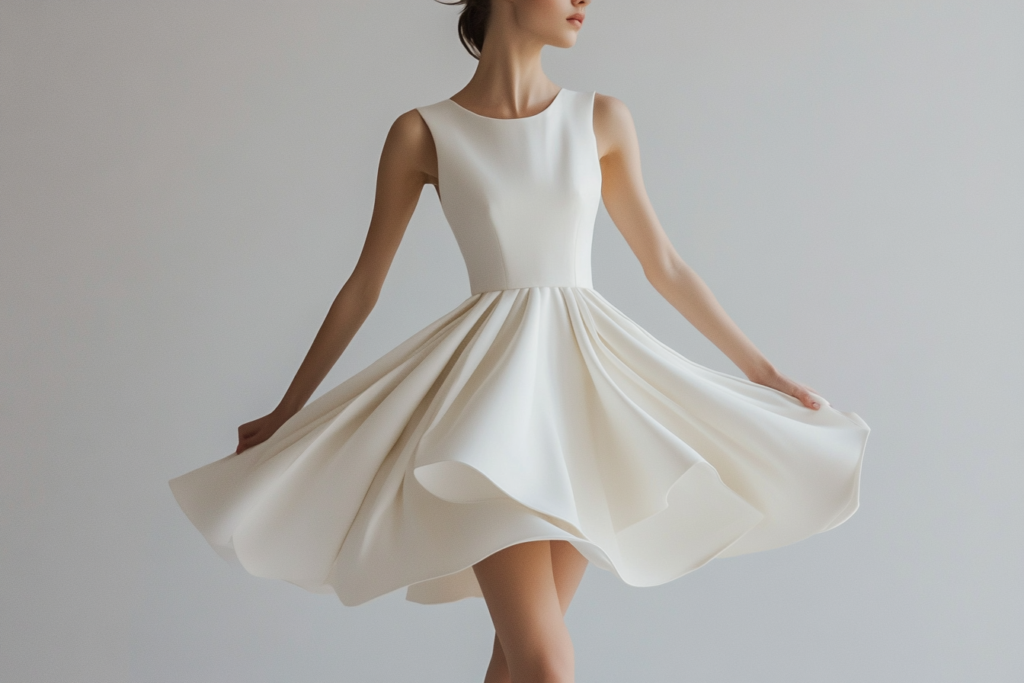
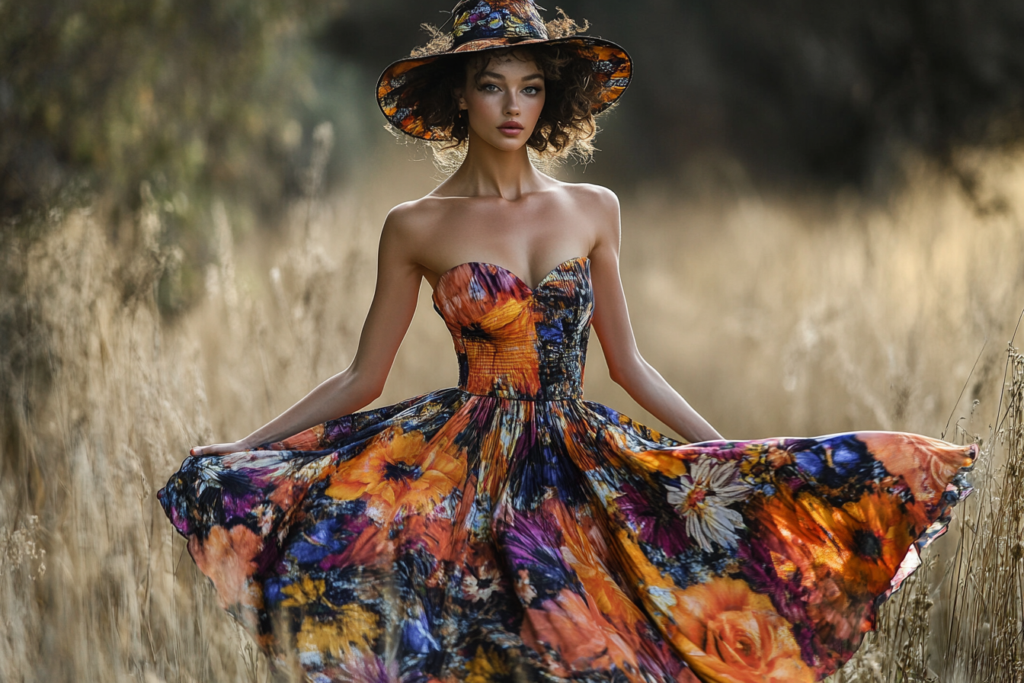
| Dress Type | Description | Occasions | Ideal For |
|---|---|---|---|
| Fit-and-Flare Dress | A dress that is fitted at the waist and flares out in a full skirt, offering both structure and flow. | Parties, cocktail events, casual wear | Retailers, Designers |

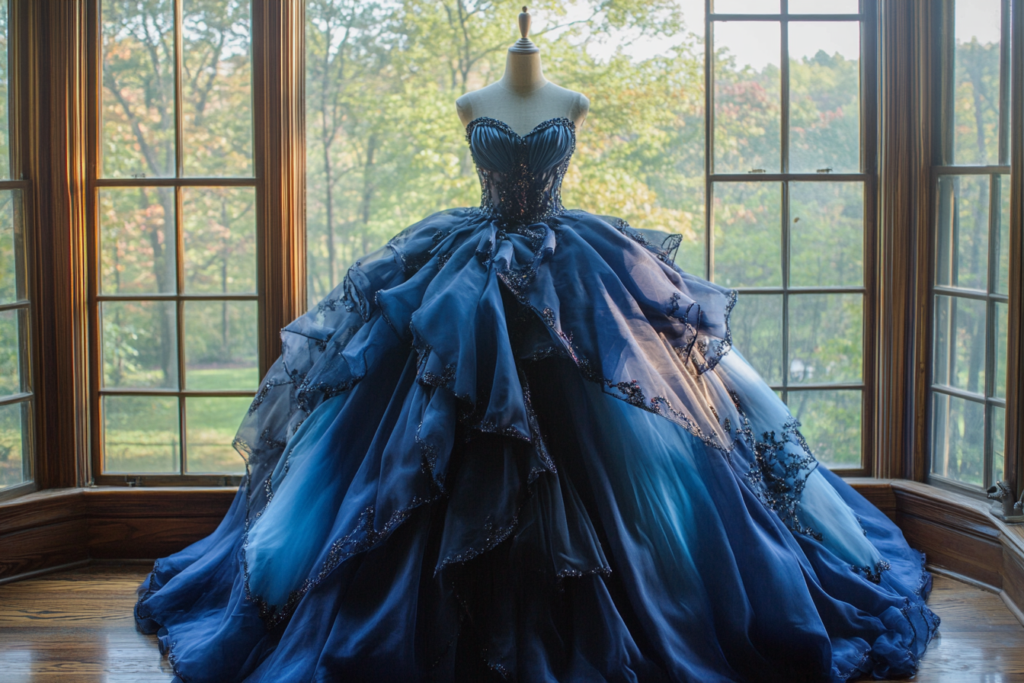
| Dress Type | Description | Occasions | Ideal For |
|---|---|---|---|
| Ball Gown | A formal, voluminous dress typically worn for galas, formal events, or weddings. | Formal events, weddings, red carpet events | Bridal stores, Event planners |

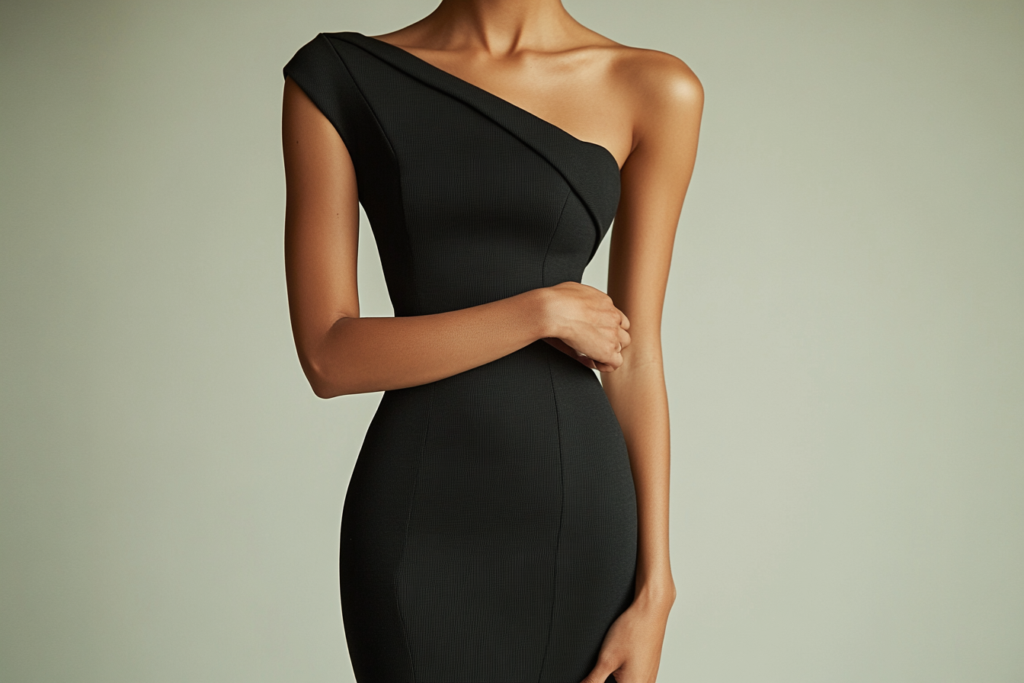
| Dress Type | Description | Occasions | Ideal For |
|---|---|---|---|
| Bodycon Dress | A figure-hugging dress made from stretchable fabric, emphasizing the body’s shape. | Night outs, clubbing, cocktail parties | Retailers, Designers |

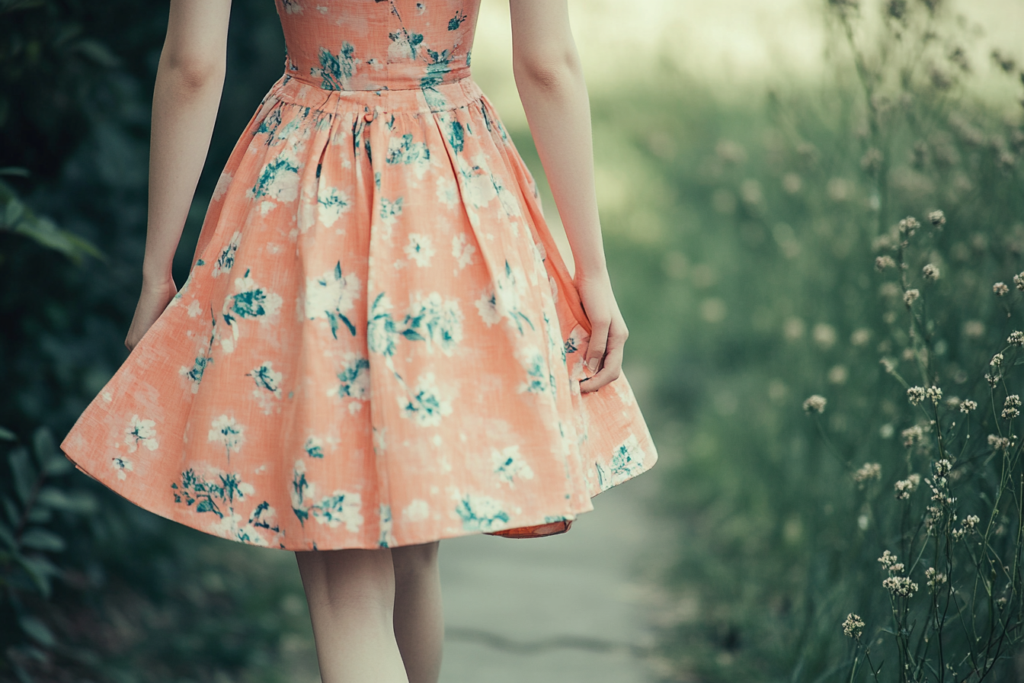
| Dress Type | Description | Occasions | Ideal For |
|---|---|---|---|
| Tea-Length Dress | A dress that falls between the knee and ankle, often associated with vintage or retro styles. | Semi-formal events, garden parties, tea parties | Designers, Store brands |
Dress Silhouettes: The Shape That Defines the Dress
The silhouette of a dress refers to its shape or outline, which is key to determining how the dress will fit and flatter the body. Here are some of the most popular dress silhouettes:
- A-Line Silhouette: As the name suggests, the A-line dress flares out from the waist, creating a shape that resembles the letter “A.” This is one of the most universally flattering silhouettes as it works for various body types, giving it both style and comfort.
- Sheath Silhouette: The sheath dress is form-fitting and hugs the body closely. It often has a straight cut from the shoulders down and works well for formal occasions where a sleek, tailored look is needed.
- Empire Waist Silhouette: The empire waist dress has a high waistline just under the bust, creating a flowy, relaxed fit from the waist down. This is perfect for petite frames or those looking for a more relaxed but elegant look.
- Ball Gown Silhouette: The ball gown is full-skirted and often worn for highly formal events. This dress gives volume and drama, making it the perfect choice for weddings or other grand occasions.
- Fit-and-Flare Silhouette: The fit-and-flare dress fits snugly through the bust and waist, and then flares out from the hips. This silhouette balances between form-fitting and flowy, offering a feminine, flattering look.
- Shift Silhouette: Shift dresses are straight and loose with no emphasis on the waist, creating a simple and effortless look. It’s ideal for casual wear and can be both comfortable and stylish.
Common Dress Names Across Different Countries
Although the core concept of a dress is universal, different countries often have unique names for dresses or specific designs.
| Country | Dress Name | Description |
|---|---|---|
| United States | Cocktail Dress | A short, formal dress worn for evening events, such as parties or dinners. |
| France | Robe de Soirée | A formal evening dress worn for gala events and weddings, typically made of luxurious fabrics. |
| Japan | Kimono | A traditional Japanese dress made from silk, featuring wide sleeves and a wraparound design, often worn for special occasions. |
| Mexico | Mexicana Dress | A brightly colored dress often adorned with embroidery and worn for festive occasions such as fiestas. |
In countries like India, the sari is an iconic garment worn for formal and cultural occasions, while in Japan, the kimono remains a symbol of tradition and elegance. In France, the robe de soirée is a quintessential choice for formal evening events, showcasing luxury and sophistication.
Colors and Patterns: The Palette of Fashion
Dresses come in a myriad of colors and patterns, each chosen for its ability to suit specific occasions or seasons.
- Classic Colors: Black, navy, and white are timeless choices that work for both formal and casual occasions. A little black dress (LBD) is a must-have staple in every wardrobe.
- Bright Colors: Red, blue, and yellow are vibrant hues often chosen for spring and summer events. These colors can make a bold statement or convey energy and optimism.
- Pastels: Pale pinks, lavenders, and mint greens are soft, romantic choices perfect for weddings, brunches, and garden parties.
- Patterns: Dresses are also available in a variety of patterns such as floral, polka dots, stripes, and animal prints. Floral dresses, for example, are often associated with spring and summer fashion.
Occasions for Wearing Dresses
Dresses are incredibly versatile and can be worn for almost any occasion, depending on the style, cut, and fabric. Here are some key events for which women typically wear dresses:
- Casual Wear: Sundresses, shift dresses, and maxi dresses are perfect for day trips, running errands, or relaxing with friends.
- Office Wear: Sheath dresses, pencil skirts, and blouses are ideal for professional settings, offering a mix of elegance and formality.
- Evening Wear: For cocktails, galas, and evening events, women often wear cocktail dresses, evening gowns, and ball gowns that make a lasting impression.
- Weddings: Brides wear wedding dresses, often long and white, while guests may opt for cocktail dresses, tea-length dresses, or formal evening gowns depending on the dress code.
- Party and Events: For parties, birthdays, and celebrations, women may choose bodycon dresses, mini dresses, or fit-and-flare dresses to reflect fun, playful energy.
Dress Sizes: Fit and Comfort for All Body Types
One of the most important considerations in women’s dresses is size. Dresses come in a variety of sizes that cater to different body types. It’s essential for brands and designers to provide a range of sizes to accommodate their customer base.
- Petite Sizes: Dresses for women who are 5’4″ or shorter, designed with shorter hemlines and adjusted proportions.
- Regular Sizes: Standard sizes that cater to average body proportions.
- Plus Sizes: Sizes designed for fuller figures, with adjustments for fit at the bust, waist, and hips.
- Custom Sizes: Some brands offer custom-sized dresses tailored to the customer’s exact measurements for a perfect fit.
Popular Dress Styles for Modern Women
Modern women’s fashion continues to evolve, with new styles making their way into mainstream fashion. Popular trends today include:
- Boho Dresses: Inspired by bohemian style, these dresses feature relaxed fits, flowing fabrics, and ethnic prints.
- Fit-and-Flare Dresses: A silhouette that is both flattering and stylish, perfect for a feminine, classic look.
- Wrap Dresses: A versatile style where the dress wraps around the body, often worn for both professional and casual events.
- Peplum Dresses: Featuring a flared, gathered portion at the waist, these dresses create a more defined, hourglass figure.
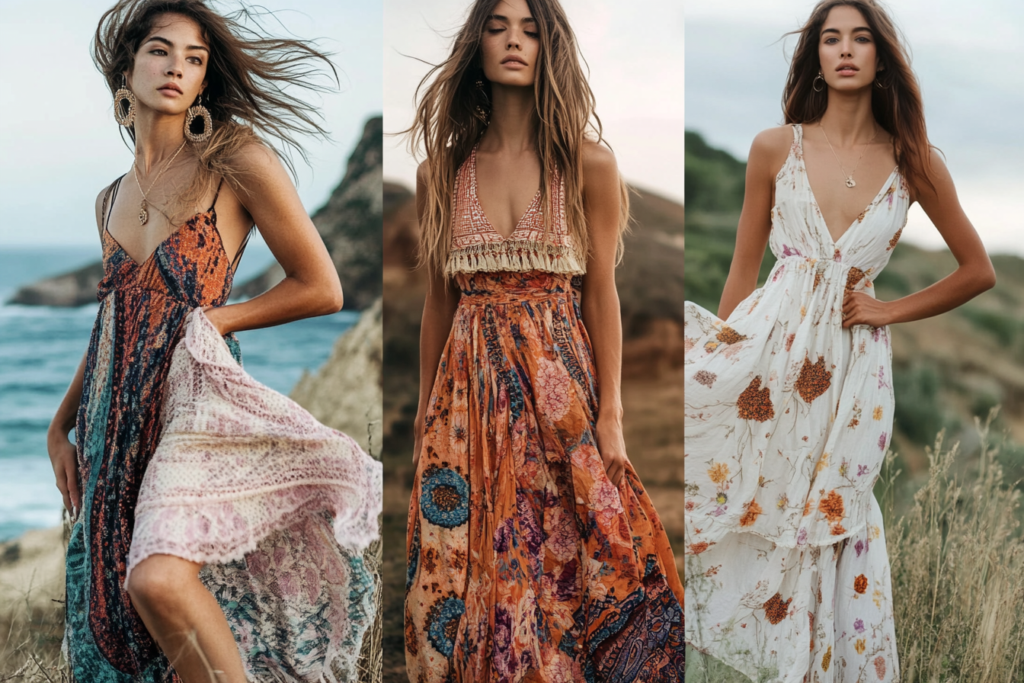
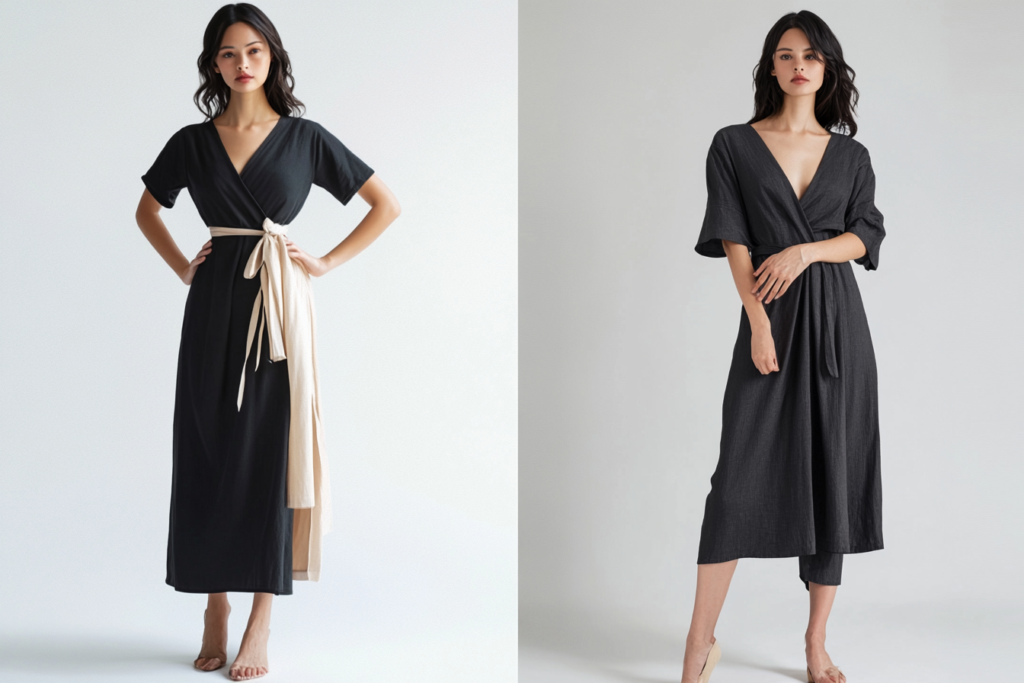
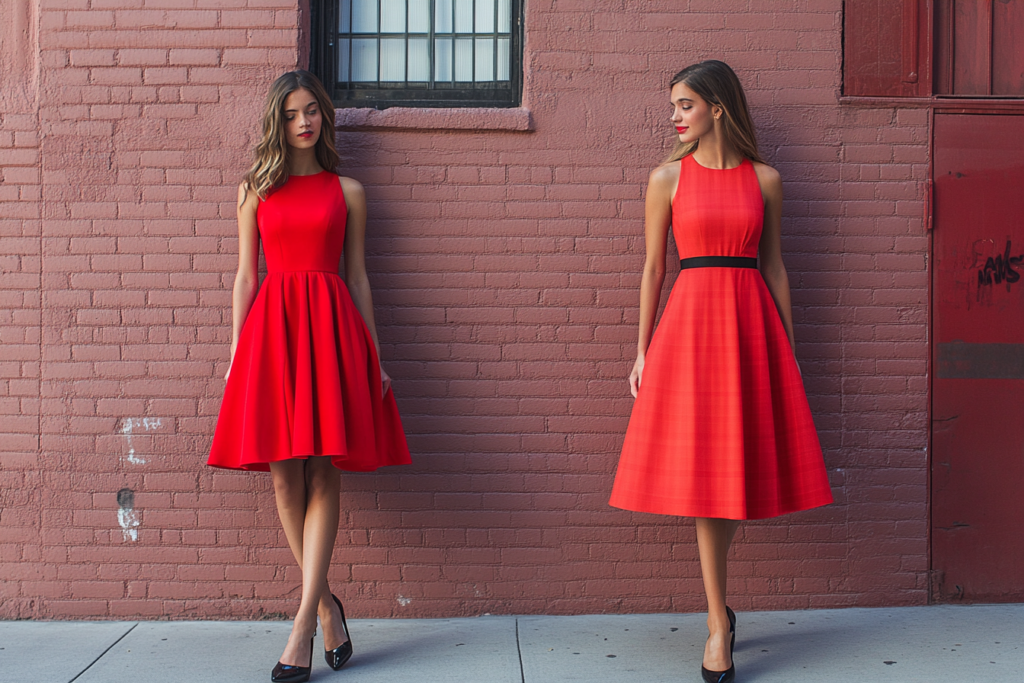

Dresses—A Timeless Fashion Essential
Dresses are more than just a piece of clothing—they are a symbol of femininity, elegance, and versatility. From the simple shift dress to the glamorous ball gown, dresses offer women an opportunity to express their personal style while also fulfilling practical needs for every occasion. Whether for casual wear, formal events, or work attire, dresses continue to be a timeless piece in the modern woman’s wardrobe.
